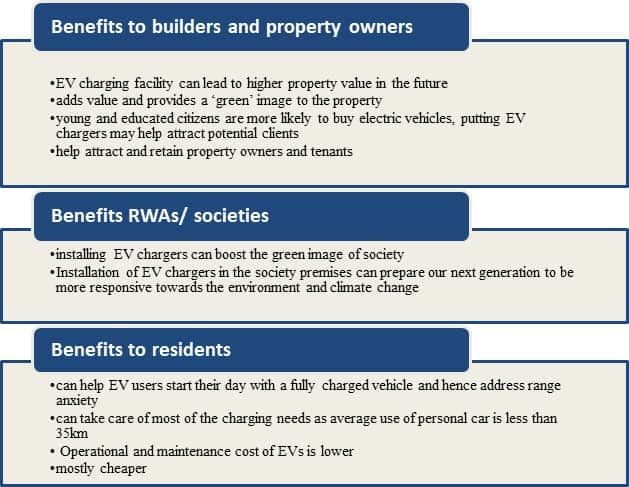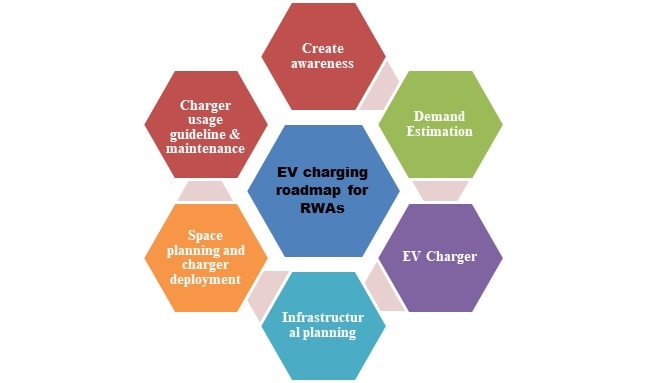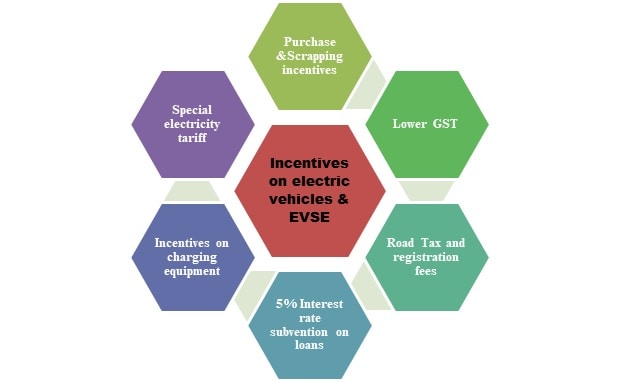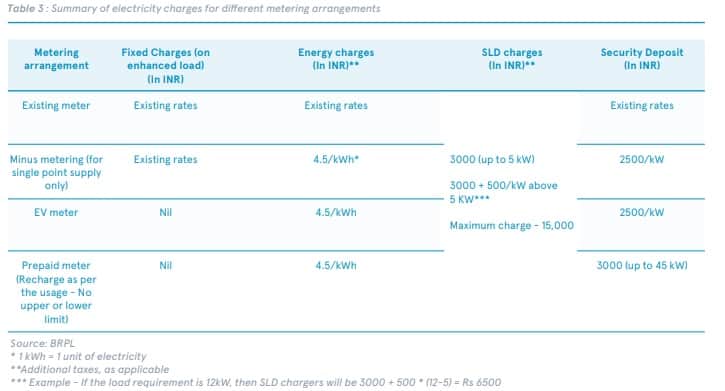As Indian cities move towards electric vehicles (EV) for public and private transport, the question of easy and convenient electric vehicle charging in cities becomes paramount. The latest union budget has chipped in to hasten this by announcing a battery swapping policy and interoperability standards. The policy is to ensure all EV manufacturers use standardised, removable/disposable batteries while reducing the cost of EV ownership by negating the need to purchase a new battery, the most expensive component of an EV. This, it is hoped, will incentivise improving electric vehicle (EV) infrastructure across the country.
Currently, India is the world’s fifth largest car market and has the potential to become one of the top three in the near future, adding around 40 crore new car owners by 2030. Which means the country has to be prepared to provide the required infrastructure, keeping in mind environmental issues.
A charging guidebook
In 2020, the Delhi government unveiled its Delhi Electric Vehicle Policy, whose vision was to promote the adoption of EVs as a part of measures to improve Delhi’s air quality. It aimed to ensure that 25% of all new vehicles sold by 2024 would be electric.
Read more: Delhi electric vehicle policy: Ambitious targets, but is the capital ready?
With this objective, the Dialogue and Development Commission of Delhi, in collaboration with the World Resources Institute recently launched a Residential EV Charging Guidebook 2022. This document aims to help residential societies understand the importance of setting up EV charging stations and suggests ways on how to go about it in a planned and safe manner.
The document has three objectives:
- Encouraging RWAs to install EV charging facility with shared access that can be used by all the EV owners in the society
- Encouraging residents to adopt electric vehicles
- Supporting residents (by providing necessary permissions) in the installation of charging points within their premises
To aid implementation of the guidebook’s recommendations, the Delhi government amended the Unified Building Bye-Laws (2016), wherein 20% of the parking capacity in buildings must be reserved for EV charging infrastructure. Further, in 2021, the government directed all commercial and residential institutions having a parking capacity of 100 or more vehicles to reserve 5% of their parking space for electric vehicles with suitable EV chargers with a minimum 3.3kw output.
EV usage and availability of charging points is currently at a nascent stage in Delhi. It is thus necessary to ensure proper planning and adoption of best practices to reduce project cost and improve the overall experience of EV charger usage.
Safety and asset longevity
- EV parking and charging space must have minimal exposure to extremely high temperatures
- Awareness sessions must be organised on usage of EV chargers in RWAs for better handling of the charging equipment
- To ensure safety of the asset, there should be deployment of CCTV cameras in the EV charging zone
- EV charging area should preferably be away from the play areas
- As precaution, EV charging points should have a socket supply outlet at least 2.6 feet above ground level
- The RWA should ensure that there are boards/notices clearly displayed at each charging point, which would mention the specifications of those charging units. Information on the EV models compatible with the charge points could also be provided through mobile apps
- Fire detection, alarm and control system should be provided as per relevant standards
- All consumers/RWAs should install a suitable device for earth leakage protection within the time as may be notified by the DERC. Also, no new connection shall be energized unless a suitable earth leakage protection device has been installed
Electric Vehicle Supply Equipment (EVSE) Unit
- Carefully evaluate EVSE financial incentives offered by the government
- Choose the EVSE unit with minimum level of features needed. Additional features that are not required may just add to the upfront and maintenance cost
- A wall-mounted EVSE minimizes drilling of holes through building structures for routing of electrical conduit and wiring
- Choose a dual/multi-gun EVSE to minimize installation costs per charge port. A planned charging approach can allow the installation of more EVSE without the need for connection/sanctioned load up-gradation
- Charger usage and other common electricity usages needs to be controlled in a manner that total usage is within the sanctioned limit
- RWAs should assess EV usage and charging habits of residents. Coordinated charging of EVs will allow more EVs to be charged by a given number of EVSEs
- RWAs should select an optimal mix of AC and DC chargers to optimize the overall cost of the project
Electric Infrastructure
- In the beginning, RWAs should try to accommodate the EV chargers in the existing sanctioned load. Additional power load or a new connection can increase project cost.
- It is critical to apply for a separate EV meter to avail subsidized tariff for EV charging. Operating on residential/commercial tariffs increases charging cost.
Long Term Planning
- Residential buildings under construction should allocate space for EV charging requirements at the time of construction and apply for electric connection accordingly.
- Also, attention should be paid to the future requirement of electricity infrastructure (panels and conduit) during initial construction rather than modifying the structure later.
- When upgrading existing charging facility, also provide infrastructure for future EVSE installations. This will minimise the cost of installing future units.
A single-window facility system has been developed to apply for the installation of EV-charging points and avail the subsidy from without any hassle. As per the subsidy, a 3.3-KW LEVAC charger can be brought for less than Rs 2,500.
Also, three DISCOMs BRPL, BYPL and TPDDL — have empanelled more than 10 EV charger vendors, who will provide certified chargers to citizens, in accordance with prescribed standards. Through Switch Delhi’s web page, one can submit a request for EV charging point and connection installation. Electricity rate of Rs. 4.5 per unit for all such EV connections has been mandated.
Permits, documents and clearances to be submitted by RWAs to DISCOMs
The applicants are required to provide two self-attested documents i.e. ID proof and land ownership proof to apply for EV Charger from the DISCOM’s portal.
Document as proof of identity (any can be accepted):
- Electoral identity card
- Passport
- Driving license
- Ration card having photograph
- Aadhar card
- PAN card
- Photo identity card issued by any Government agency
- If the applicant is an organization, certificate of incorporation/registration issued by the Registrar and proof of authorization/resolution from the board
- Document as the proof of ownership or occupancy of premises (any can be accepted):
- Certified copy of title deed;
- Certified copy of registered conveyance deed;
- General Power of Attorney (GPA);
- Allotment letter/possession letter;
- Valid lease agreement along with undertaking that the lease agreement has been signed by the owner or his authorized representative
Why is this important?
EVs will contribute to savings on oil import costs, it is also expected to play an important role in EV manufacturing industries for job creation. Additionally, through several grid support services which facilitate basic function of generation, transmission and distribution, EVs are expected to strengthen the grid and help accommodate higher renewable energy penetration while maintaining secure and stable grid operation.




